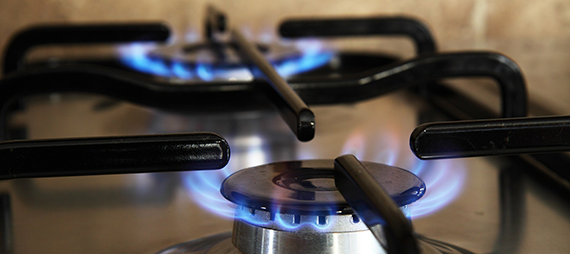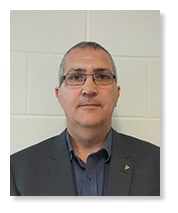The Gas Appliances Regulation & “State of the art”

Hopefully, you will have read some of our previous blog posts on the impact of the new Gas Appliances Regulation (the GAR), and some of the various technical aspects associated with its introduction in April 2018. In this post, I am turning my attention to a particular phrase that seems to be causing an unparalleled level of angst in the community – “the state of the art”.
To set the scene, this phrase appears in two places within the GAR, as follows:
| Annex I: Preliminary observation 2: |
| “The essential requirements are to be interpreted and applied in such a way as to take into account the state of the art and current practice at the time of design and manufacture as well as technical and economic considerations which are consistent with a high degree of energy efficiency and of health and safety protection” |
So what does this mean? Well, I would say first of all that this suggests that the essential requirements have no absolute meaning and they are intended to be a moving target whose meaning will change over time, which is consistent with our societal view of the term “safe”. Products are expected to become safer over time, as we learn more about the products themselves, technology becomes more affordable, and the world around us changes in a broad sense… consider:
- Safety EMC immunity testing was not performed on electronic control systems when I first set out designing them in the 80’s. Interference from other electronic devices was not considered a credible risk then, but the presence of so many mobile broadcasting devices today (think Wi-Fi, Bluetooth and mobile phones!) makes such testing an essential part of any safety evaluation in today’s world.
- Acceptable gas cooker oven door temperatures have been reduced dramatically in the last 10-15 years as the associated technology has improved and society attempts to drive down related injuries to vulnerable consumers.
The GAR requirement also makes it clear that different interpretations of safety may be applied at different times in the life-cycle of a product; acknowledging that the interpretation used at the time of design might be different from the interpretation at the time of manufacture, and this suggests that manufacturers need to respond to changes in the “state of the art” during the life of the product, not simply take this into account at the initial design stage.
The other place in the GAR, that “state of the art” gets a mention is in notified body duties:
| Annex III – EU Type Examination: 1.7: |
| “The notified body shall keep itself apprised of any changes in the generally acknowledged state of the art which indicate that the approved type may no longer comply with the applicable requirements of this Regulation, and shall determine whether such changes require further investigation. If so, the notified body shall inform the manufacturer accordingly." |
Again, this implies that the “state of the art” is something that can be expected to change over time and is generally independent of the specific product under consideration.
The dictionary provides the natural meaning to the term “state of the art” as “the most recent stage in the development of a product, incorporating the newest ideas and features”, and it’s my contention that the “newest ideas and features” in the context of the safety of gas appliances and fittings will be the requirements and solutions detailed in the latest harmonised European Standard, as this is where the industry defines its thinking in this context.
So, in the broadest sense, it is logical that compliance with the latest European Standards will generally provide for compliance with the “state of the art” as well. This view is supported by the European Commission’s Blue Guide on the implementation of EU product rules:
- 4.1.2.5 “The concept of essential requirements is based on the assumption that the harmonised standards reflect generally acknowledgeable state of the art”, and
- 4.1.3 “Furthermore, even if the manufacturer has not used harmonised standards, a change in the relevant harmonised standard could mean a change in the state of the art that implies that his product may not be compliant.”
None of this should be taken to mean that compliance with the latest EN standards is in any way mandatory under the GAR, as standards remain voluntary and only the essential requirements must be complied with. However, even where manufacturers choose different technical solutions to demonstrate compliance with the GAR, they do need to take into account the “state of the art” that is referenced in the latest EN standards.
I’ll finish with some examples where I think the “state of the art” might have changed in recent times, and manufacturers would be wise to ensure their products remained up to date as far as practicable:
- The introduction of EN 298: 2003, which introduced a new requirement for two “switching elements” in electronic control systems for gas appliances. This represented a major shift in safety from the previous edition of the standard.
- The change in air-proving requirements for gas boilers is covered by EN 15502-1: 2012. The previous standard (EN 483: 1999) had permitted compliance with any one of three tests (blockage of the flue, blockage of the air inlet, or slowing of the fan at the choice of the manufacturer). The latest standard requires compliance with all three tests, as they represent different risks
- The withdrawal of presumption of conformity of EN 521; 2006 for portable flat table cookers, as the tests for overheating of gas canisters did not adequately cover reasonably foreseeable use of the products.
So, in conclusion, it’s my view that the latest industry standards generally define the “state of the art” and manufacturers would be advised to keep their products up to date with the key changes relevant to safety that are defined in the standards, taking into account the technical and economic considerations of making these changes. This doesn’t mean that products have to change overnight to comply with the latest standard, but this should be completed in a reasonable time in order to maintain compliance with the GAR.

Author: Graham McKay
Global Head of Gas & Electrical Products



